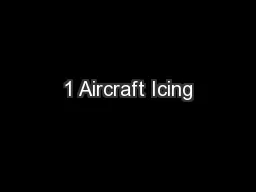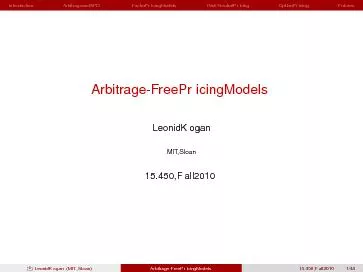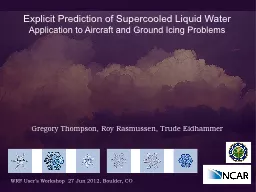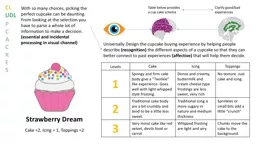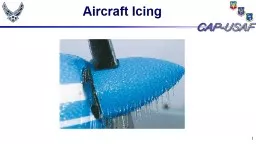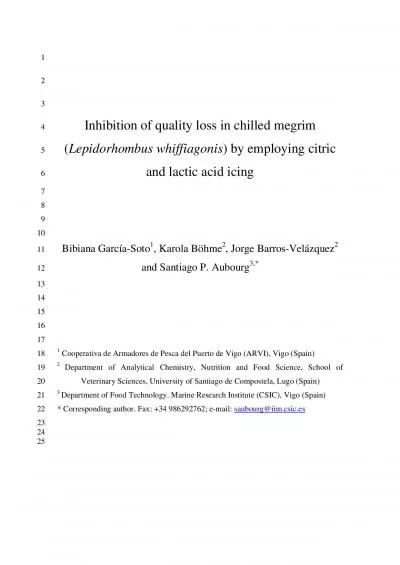PPT-1 Aircraft Icing
Author : faustina-dinatale | Published Date : 2015-11-21
2 Icing Factors Liquid water content Temperature Droplet size Cloud type Airfoil geometry Airspeed Duration of exposure 3 Where Icing is Likely to Occur 4 Icing
Presentation Embed Code
Download Presentation
Download Presentation The PPT/PDF document "1 Aircraft Icing" is the property of its rightful owner. Permission is granted to download and print the materials on this website for personal, non-commercial use only, and to display it on your personal computer provided you do not modify the materials and that you retain all copyright notices contained in the materials. By downloading content from our website, you accept the terms of this agreement.
1 Aircraft Icing: Transcript
Download Rules Of Document
"1 Aircraft Icing"The content belongs to its owner. You may download and print it for personal use, without modification, and keep all copyright notices. By downloading, you agree to these terms.
Related Documents

